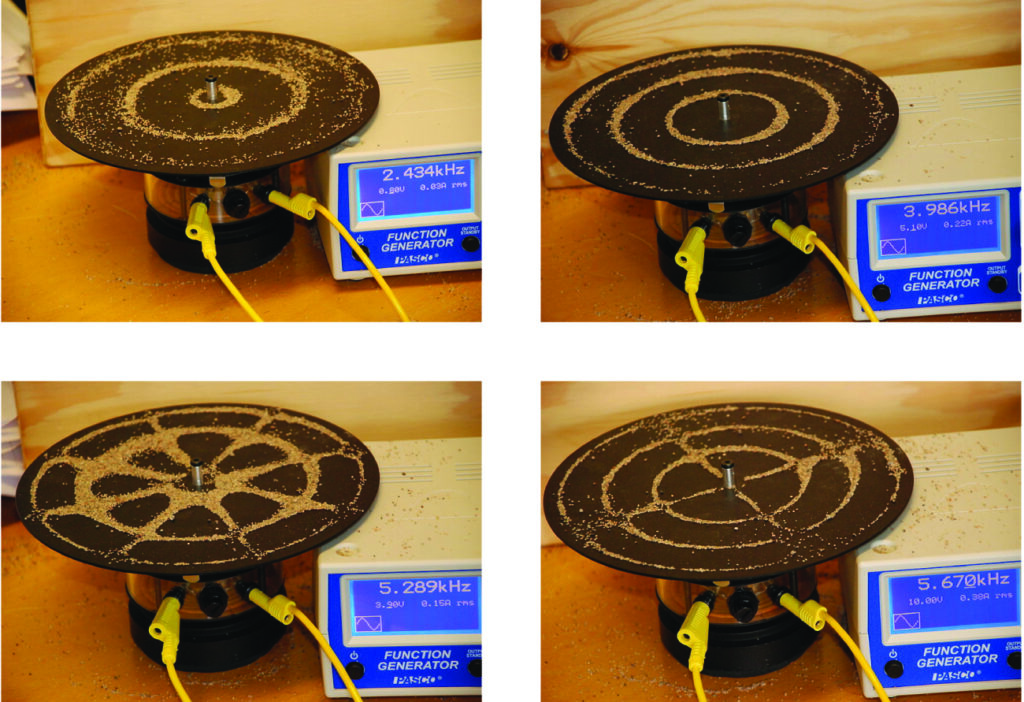Not all waves are travelling waves. Standing waves (also known as stationary waves) remain constrained within some region of space. These waves are crucial for understanding the electronic structure of atoms and molecules.
A vibrating string fixed at both ends provides a fundamental example of a one-dimensional wave. Figure 1 shows the four lowest-energy standing waves (the fundamental wave and the lowest three harmonics) for this string at a given amplitude. The string’s motion primarily occurs within a plane, the wave itself remains one-dimensional, extending along the string’s length. The motion of the string segments perpendicular to its length generates the waves. The amplitude is visible as the maximum displacement of the curves in Figure 1. The key observation from the figure is that only those waves having an integer number, n, of half-wavelengths between the end points can form. Hence, a system with fixed end points such as this restricts the number and type of the possible waveforms. This example illustrates quantization, where we observe only discrete values from a more general set of continuous values for a property.
Harmonic waves
Harmonic waves, displaying more than one-half wavelength, have nodes—points of no motion—between the endpoints. These special points are nodes. The energies of the standing waves with a given amplitude in a vibrating string increase with the number of half-wavelengths n. Since the number of nodes is n – 1, we can also say that the energy increases as the number of nodes increases.

Figure 2 shows an example of two-dimensional standing waves, illustrating the vibrational patterns on a flat surface. Although, we can’t see vibrational amplitudes like with a vibrating string, sprinkling powder on the drum surface reveals the nodes. The powder collects in areas with minimal displacement. For one-dimensional standing waves, nodes are points on the line. In two-dimensional standing waves, nodes are lines on the surface. For three-dimensional standing waves, nodes are two-dimensional surfaces within the three-dimensional volume.

You can watch the formation of various radial nodes here as singer Imogen Heap projects her voice across a kettle drum.